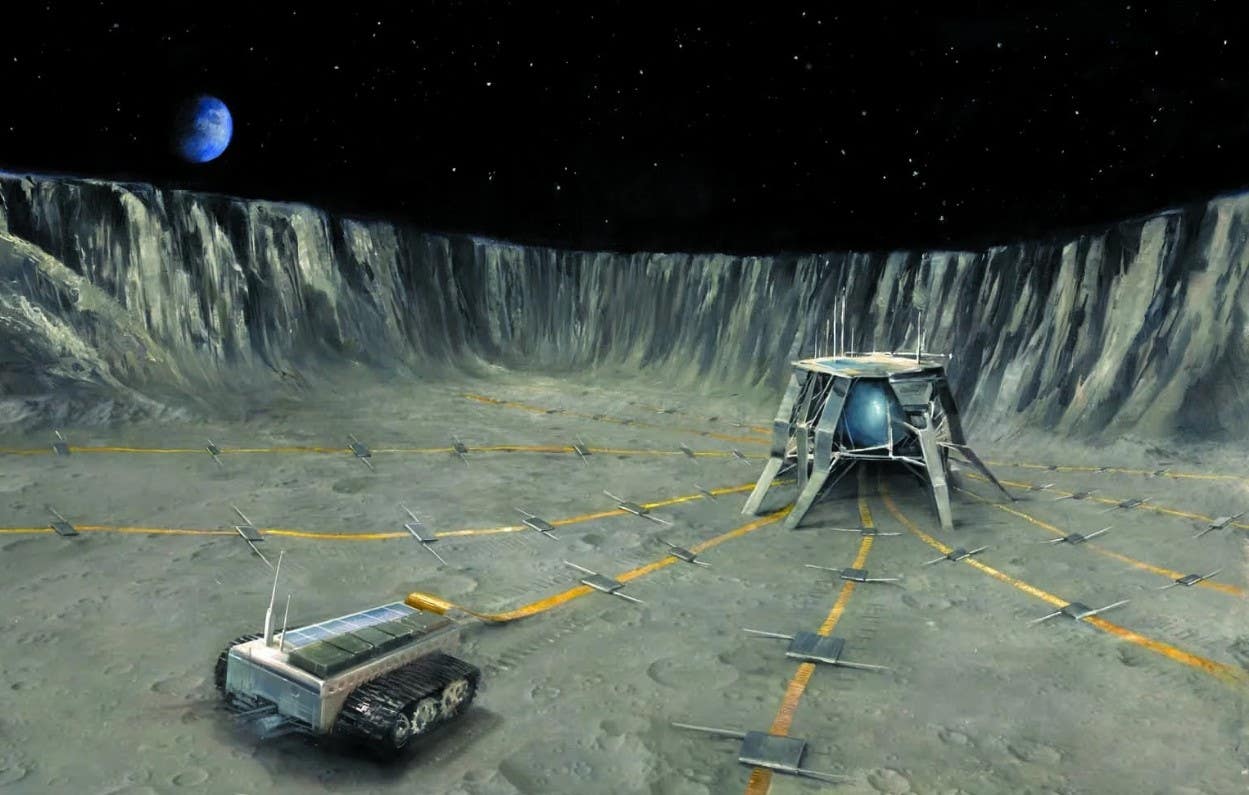Moon-based telescopes could explain the birth of our universe
Earth-based telescopes that look that far back to the big bang (BB) 13.8 billion years ago are unable to resolve the relevant details.

[Apr 24, 2022: William Reville]
Preparatory work on moon-based telescopes is already under way. (CREDIT: Creative Commons)
Science is still not sure exactly what happened immediately after the birth of our universe in a giant explosion called the big bang (BB) 13.8 billion years ago. Earth-based telescopes that look that far back in time are unable to resolve the relevant details, but telescopes based on the far side of the moon should be capable of doing the job. Preparatory work on moon-based telescopes is already under way.
Our moon orbits Earth at an average distance of 384,400km. When we look up at the moon from Earth we always see the same “man in the moon” face, lit up by light from the sun reflected to Earth. We often call the other side of the moon the “dark side”. Many people think that this side is in permanent darkness, but this notion is untrue.
The moon rotates as it orbits Earth and the time it takes to rotate on its axis is the same as the time it takes to circle Earth – 27.2 days. Therefore, the same hemisphere of the moon always faces Earth; we are in synchronous rotation with the moon. Because the moon rotates on its axis, a full 50 per cent of the moon is lit by the sun at any one time, but we can only see the side that faces us. The far side of the moon gets as much light as the side that faces us. Astronomers don’t refer to the side of the moon facing away from us as the dark side because this is not always true. It is best to refer to this side of the moon as the far side.
Meaningful answers
The best way to detect faint fingerprints from the BB is to monitor long wavelength radio waves emitted at that time. Earth-based radio telescopes are unable to resolve these radio waves crisply enough to give meaningful answers because of electromagnetic interference from human activity and because the ionosphere, an electrically charged layer in Earth’s upper atmosphere, blocks some radio waves from reaching Earth. But radio telescopes located on the far side of the moon would be shielded from man-made electromagnetic interference and would experience little or no interference from the negligible atmosphere of the moon.
Related Stories
The widely accepted current model of the evolutionary history of our universe is the inflationary model which states that immediately after the BB cosmic inflation exponentially expanded space-time by a factor of 10 to the power of 30 over approximately a trillionth of a trillionth of a trillionth of a second. This model explains many features of the observable universe that would otherwise be very puzzling, for example its uniform temperature everywhere and its flat geometry. However, as yet, there is no knock-down demonstration that the inflationary model is correct.
There are 92 natural elements in the universe ranging from the lightest, hydrogen (H), to the heaviest, uranium. The two lightest elements, H and helium, were forged in the BB. An atom has a positively charged central nucleus orbited by negatively charged electrons. For 380,000 years after the BB the universe was so hot that electrons were unable to stick to nuclei but by then the universe had cooled sufficiently to allow electrons to stick to nuclei and vast clouds of hydrogen gas formed. At this stage of the universe’s history the “dark age” – no stars – existed. The first stars didn’t shine for another few hundred million million years, ending the dark age of the universe.
Magnified relic
Hydrogen emits radiation with a wavelength of 21cm (frequency of 1,420 megahertz). The radio telescopes to be located on the moon should be able to peer back into the dark age of the universe to detect the original hydrogen clouds through the 21cm wavelength signal. If the universe went through an inflationary stage immediately after the BB this would leave a magnified relic of its history in the form of swirls in the pattern of the 21cm wavelength signal.
The observations of the moon radio telescopes will tell us whether or not our current basic understanding of the standard model of cosmology is soundly based. Perhaps this model needs modification or perhaps we need to formulate an entire new physics. Further details on telescopes on the moon feature in an article by Anil Ananthaswamy in Scientific American this month.
Note: Materials provided above by William Reville. Content may be edited for style and length.
Like these kind of feel good stories? Get the Brighter Side of News' newsletter.
Tags: #New_Innovations, #Global_Good_News, #Space, #Moon, #Earth, #Astronomy, #Telescope, #Big_Bang, #Universe, #Science, #Research, #The_Brighter_Side_of_News
Joseph Shavit
Head Science News Writer | Communicating Innovation & Discovery
Based in Los Angeles, Joseph Shavit is an accomplished science journalist, head science news writer and co-founder at The Brighter Side of News, where he translates cutting-edge discoveries into compelling stories for a broad audience. With a strong background spanning science, business, product management, media leadership, and entrepreneurship, Joseph brings a unique perspective to science communication. His expertise allows him to uncover the intersection of technological advancements and market potential, shedding light on how groundbreaking research evolves into transformative products and industries.



